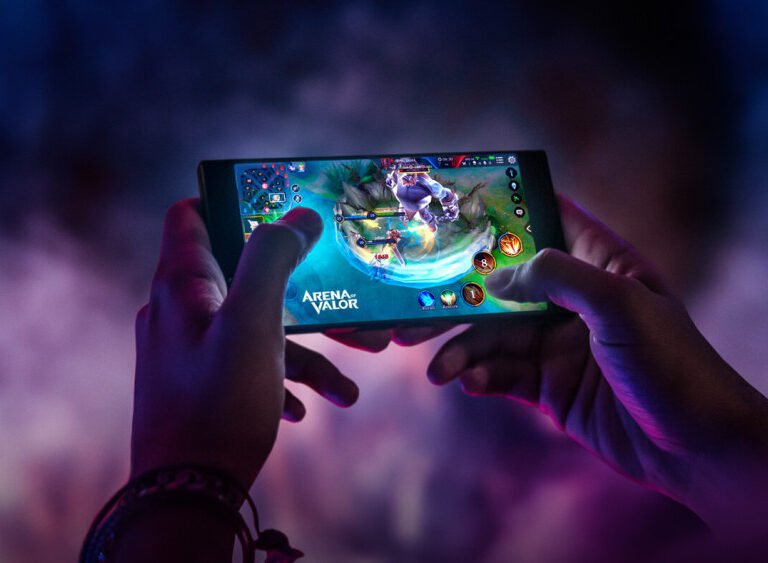
The video game business has transformed because of mobile games, a subgenre of games played on smartphones and other portable devices. The history of mobile gaming is astonishing, spanning from the simple Tetris game on the Hagenuk MT-2000 in 1994 to the sophisticated, high-quality games seen on modern smartphones. This article examines mobile games’ development, history, and noteworthy effects on the overall gaming industry.
Early Beginnings The Development and Importance of Mobile Gaming
The Development and Importance of Mobile Gaming, A Tetris-style game for the Hagenuk MT-2000 handheld was the first mobile game ever discovered in 1994. But it wasn’t until 1997, when Nokia released Snake, that mobile gaming started to take off. Snake, which came pre-installed on most Nokia handsets, became one of the most-played games ever, with over 350 million devices globally.
Technological Advancements
As mobile devices became more computationally advanced, the potential for mobile games expanded. Initially limited to simple, pre-installed games, the development of app stores in 2008, such as Apple’s iOS App Store, transformed the mobile gaming landscape. These app stores provided a platform for developers to distribute their games directly to consumers, significantly broadening the market.
The Early Innovations and i-mode
The Development and Importance of Mobile Gaming, The i-mode mobile platform, introduced by NTT Docomo in 1999 in Japan, allowed for the download of mobile games onto cell phones. A wide range of games, including new releases from reputable developers and ports of vintage arcade games, became accessible as a result of this breakthrough. Twenty million people were using i-mode by 2001, indicating the rising popularity of mobile gaming.
The App Store Revolution
The launch of Apple’s iPhone in 2007 and the App Store in 2008 marked a significant turning point. The iPhone’s advanced hardware and the App Store’s ease of access for developers and users alike revolutionized mobile gaming. The introduction of in-app purchases in 2009 further transformed the industry, allowing games like Angry Birds and Cut the Rope to monetize effectively beyond the traditional pay-once model.
Models for Monetization
The emergence of many monetization schemes following the launch of in-app purchases changed the financial landscape of mobile gaming.
High-end Model
Under the premium model, players pay for the entire game up front, with the possibility of adding more material later. For many different kinds of mobile games, this conventional approach is still in use.
Model of Freemium
Like a demo, a section of the game is available for free under the freemium model. After that, users may unlock the whole game by making a single in-app payment. This concept was utilized in early mobile games such as Cut the Rope.
Free-to-Play Model
The Development and Importance of Mobile Gaming, The free-to-play model, popularized by games like Candy Crush Saga, allows players to play the game for free with optional in-app purchases. These purchases can restore energy or stamina, buy power-ups, and provide other advantages. This model has become one of the most successful monetization strategies in mobile gaming.
Impact on the Gaming Market
Mobile gaming has significantly impacted the broader video game market. By 2016, mobile games were generating over $100 million annually, with the total revenue for the sector surpassing that of other video game areas. In 2017, mobile gaming revenue reached $50.4 billion, accounting for 43% of the global gaming market. This growth is expected to continue, with mobile gaming revenues projected to surpass those of PC and console gaming combined.
Hyper-Casual and Location-Based Games
Recent trends in mobile gaming include hyper-casual games like Flappy Bird and Crossy Road, as well as location-based games such as Pokémon Go. These games have further expanded the mobile gaming audience, drawing in casual gamers and those interested in innovative gameplay experiences.
Decline of Handheld Consoles
The Development and Importance of Mobile Gaming, The rise of mobile gaming has also led to a decline in the demand for handheld video game consoles. Both Nintendo and Sony have seen significant drops in sales of their handheld devices, as players increasingly turn to mobile phones for gaming.


Conclusion
The Development and Importance of Mobile Gaming, The evolution of mobile games from simple pre-installed titles to complex, high-quality experiences has transformed the gaming industry. Technological advancements, innovative monetization models, and the widespread adoption of smartphones have driven this growth. As mobile gaming continues to expand, it will undoubtedly shape the future of the broader gaming market, offering new opportunities and challenges for developers and players alike. DO YOU WANT TO LEARN The Complete Manual of Personal Finances Budgeting Investing and Savings just see this artical.
